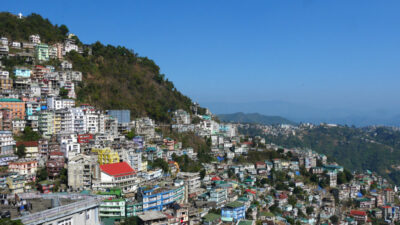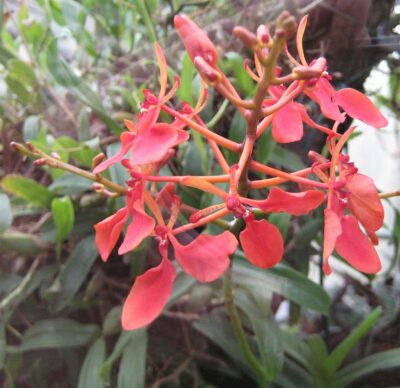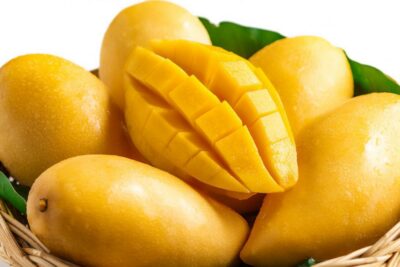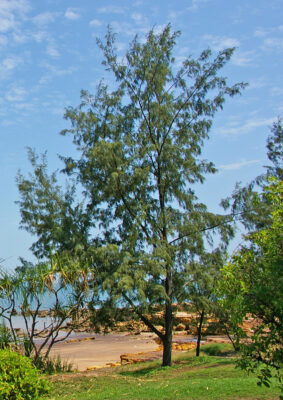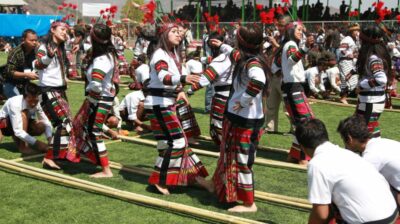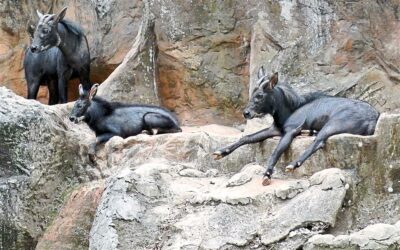State Symbols of Mizoram
Last updated on January 13th, 2023 by Editorial Staff
By | Updated on January 13, 2023
Reviewed by Rittika
Mizoram, a state with 21 prominent peaks of varying heights, is ideal for hill lovers. The state is one of the most popular holiday locations in North East India, with hilly terrains and gorgeous valleys and rivers and lakes.
One of the ‘Eight Sister States,’ Mizoram shares boundaries with three Indian states, namely Assam, Manipur, and Tripura, and two bordering countries, Bangladesh and Myanmar.
Aizawl, the capital of Mizoram, is the state’s largest city with 293,416 people.
History
There are no written records of the Mizos, except for the record after the British arrived in the late 18th century. Outside of Mizoram, some tribes prefer to be called “Zomis” or simply “Zos.” In Myanmar, the British called them Lushais, Kukis (old or new Kukis, depending on the period of their encounter with the tribes), and Chins.
However, all modern historians from diverse tribes concur that all tribal groups living in the near vicinity of the current state of Mizoram – in places like Myanmar, Bangladesh, Tripura, Assam, and Manipur – formerly belonged to the same proto-tribe. People of Zo lineage, origin, or descendants are often referred to collectively as ‘Zo Hnahthlak.’
The Mizo people were self-governing, with each village functioning as its entity. Their land was never conquered by the Maharajas of Manipur, Tripura, or Chittagong, nor by the Kacharis. However, frontier skirmishes between the Mizos and the surrounding people eventually brought the British to the scene in 1871. In 1890, the Mizo country was annexed to British territory, with a little less than half of the area carved aside for the Mizo people and named Lushai Hills, while the rest was parcelled out to the neighbouring districts.
Although the exact date of the Mizos’ migration to the present-day Chin Hills in Myanmar is unknown, it is widely assumed to have occurred between four and five hundred years ago.
The Mizos of Mizoram, on the other hand, seemed to have very recently arrived in their current settlement, maybe in the late 17th or early 18th century. Christianity, which first arrived in Mizoram on January 11, 1894, by Welsh missionaries, had become the religion of the overwhelming majority of Mizos by the early 1930s.
Government
The national constitution of 1950 determines the basic governmental organization of Mizoram, as it does most other Indian states. The governor stands as the head of state and is aided by the Chief minister, the Council of Ministers, and the unicameral Legislative Assembly, who are all nominated by the president of India (Vidhan Sabha).
The state is organized into administrative districts, each with its deputy commissioner. The High Court of Guwahati (Assam) serves the state, and there is a permanent bench in Aizawl. District council and village courts are examples of lower courts. The judicial and the executive branch of government are not separated in Mizoram. Pu Zoramthanga of the Mizo National Front is the current Chief Minister of Mizoram.
Climate
Mizoram receives roughly 3000 mm of rain per year, with Aizawl receiving 2380 mm and Lunglei in the south receiving 3,178 mm. Rainfall is normally distributed evenly over the state. Strong storms between March and early May are a particular feature of the environment. The temperature varies between 12 degrees Celsius in the winter to more than 30 degrees Celsius in the summer.
The winter season stretches from November through February, with little or no rain. The spring season lasts from the end of February until the middle of April. Heavy rains begin in June and last until August. September and October are the rainy months of the year, with rain falling on and off.
Cultural Life
The Mizos are a diverse group of tribes linked by shared traditions, customs, culture, way of life, language, and rites. They are dispersed across a larger area that includes Manipur State, Cachar, Tripura State, Chittagong Hill Tracts, and Burma and is connected with the current Lushai Hills District, which was created unilaterally for official reasons. They carry their primitive customs, culture, and way of life wherever they move, always referring to themselves as Mizo and distinguishing themselves as such.
The Mizos’ culture is inextricably linked to their Jhuming agricultural tradition. All of the activities revolve around the Jhum activity, and their festival is linked to such agricultural operations somehow. The numerous stages of their shifting cultivation are linked to key festivals. We found three significant ‘Kut’ festivals in Mizo: Chapchar kut, Mim kut, and Pawl kut. This celebration is marked by a community feast, singing, dancing, and the consumption of rice beer.
The Mizos are also known for their enthusiasm for music and song. The Mizo have an interest in music. Many folk cores, tales, and songs were passed down the decades via word of mouth. Cheraw, chheih lam, khual lam, par lam, rallu lam, sar lam kai, and solakia are some of the dances.
Places to Visit
Mizoram has a pleasant climate throughout the year, beautiful scenery, and a distinct native culture, all of which have contributed to Mizoram’s popularity as a tourist destination. Here are some of the places you can go.
Solomon Temple: The Solomon Temple, located in Mizoram’s Aizawl district, is a well-known landmark and a popular tourist attraction for Christians. The temple is a church established by the Kohhran Thianghlim religious group. The Solomon Temple is built of beautiful white marble and was fashioned by artists with extraordinary skills in the image of its namesake in Israel. It is certainly one of Mizoram’s most well-known tourist destinations.
Phawngpui Tlang: The Blue Mountain, also known as Phawngpui Tlang, is one of Mizoram’s most well-known attractions. Because it is Mizoram’s tallest mountain, it is one of the state’s most popular tourist destinations. From the Phawngpui Tlang, which stands at a tremendous elevation of 7000 feet, the lush green valleys of the Mizo mountain ranges may be completely enjoyed. The Blue Mountain’s slopes, populated by herds of mountain goats, have had little to no human involvement, keeping them mostly unspoiled. The mountain is a famous destination for trekkers and explorers in Mizoram, and it offers stunning vistas.
Mizoram State Museum: The Mizoram State Museum is a collection of artefacts and relics from Mizoram’s and the Mizo people’s regional history. The Mizo people’s daily lifestyles are depicted in the museum through everyday things such as clothing, utensils, and tools. The museum is easily accessible because it is located in Aizawl’s city centre’s heart. It is, in fact, a treat for everyone interested in regional history.
Khwanglung Wildlife Sanctuary: The Khwanglung Wildlife Sanctuary lies 126 kilometres south of Aizawl, Mizoram’s capital city. The sanctuary is a wildlife refuge that covers around 35 square kilometres. Because of the wildlife and abundant greenery, the sanctuary is one of Mizoram’s most popular tourist destinations. Several endangered species, such as the Royal Bengal Tiger and the Sambar, live in the sanctuary and a variety of other unusual animals. Some of the species that may be seen here include the Sero, barking deer, gibbon, and hoolock.
Vantawng Falls: The Vantawng Falls, with an elevation of 750 feet, are the highest peak in the state of Mizoram. The Vantawng Falls are also among the most popular sites to visit in Mizoram if you want to take in the area’s scenic beauty. The Vantawng Falls’ water comes from the Vanva River and glistens as it cascades down the 750-foot plunge. Because dense forests surround the falls, they can only be seen from afar, but they are a wonderfully captivating sight even from that distance.
Mizoram’s mesmerizing culture and calm atmosphere have an irresistible allure that draws visitors from all over India and the world to enjoy the top tourist attractions in the state.
State Information
| Official Language | Mizo and English |
| State Rank | 25 |
| Demonym(s) | Mizo |
| Nickname | Peninsula State |
| ISO | IN-MZ |
| Formation Date | 20 February 1987 |
| Coordinates | Lat: 23.1645° N, Long: 92.9376° E |
| Area |
State seal
Motto of Mizoram
Satyameva Jayate-"Truth alone triumphs"
State symbols of Mizoram 👇
-
State capitalAizawl
-
State birdMrs. Hume's pheasant
-
State flowerRed Vanda
-
State fruitMango
-
State treeIron wood
-
State danceCheraw dance
-
State animalSumatran serow
-
State dishRice

